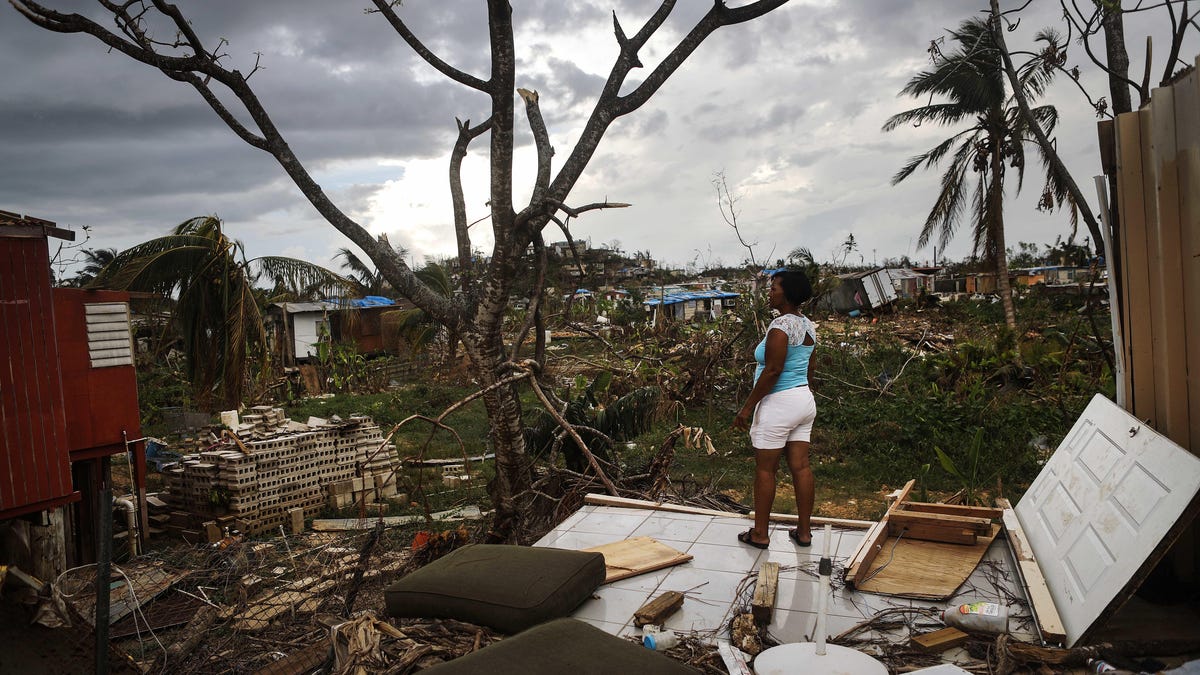FCC offering up $950M to improve broadband in Puerto Rico and Virgin Islands
The money will be used to bump up speeds and build more resilient networks, the agency says.

The 2017 hurricane season took a devastating toll on Puerto Rico and the US Virgin Islands, leaving residents without power, running water, or cellphone service.
Federal Communications Commission Chairman Ajit Pai is proposing $950 million in funding to help carriers build faster and more resilient broadband networks in Puerto Rico and the US Virgin Islands, where infrastructure was devastated by Hurricanes Irma and Maria in 2017.
The FCC provided $66 million from the Universal Service Fund to assist carriers in Puerto Rico and the US Virgin Islands soon after Maria. Then in 2018, it established the Uniendo a Puerto Rico and Connect USVI funds, which in their first phases provided $64 million to assist with network restoration in the island territories.
This latest proposal is the second phase of that funding and will offer $950 million over the next 10 years to improve, expand, and harden broadband networks in Puerto Rico and the Virgin Islands.
The proposal will be voted on at the FCC's Sept. 26 meeting.
Pai said in a statement that even though the FCC "took numerous steps to help restore communications in Puerto Rico and the US Virgin Islands following the devastating one-two punches delivered by Hurricanes Irma and Maria," the agency knew it needed a "long-term strategy." The idea is to ensure these islands have "access to the same high-speed fixed and mobile broadband networks as other Americans," and to ensure the networks can withstand future hurricanes.
In a blog post Wednesday, Pai added that the proposal will encourage and create incentives for broadband and wireless providers serving the islands to deploy gigabit-speed fixed broadband and 5G wireless service.
"Our goal is simple: to provide everyone in Puerto Rico and the US Virgin Islands with digital opportunity," Pai said in a statement.
A spokesman for the agency said on a call with reporters that the FCC would give preference in distributing the funds to carriers that promise to deploy fiber and/or offer gigabit speeds. The agency will also give preference to companies that make their networks more resilient by doing things like burying fiber infrastructure underground.
The news of the funds come as the agency prepares for more hurricanes in the US. Hurricane Dorian has already battered the Bahamas and is now close to the southeast coast of the US.
Two years ago this month, Hurricane Irma made landfall on Puerto Rico, knocking out power for more than 1.1 million residents. Two weeks later, Hurricane Maria hit the island as a category 4 storm. The result was devastating. Residents were without power and running water for months. And the storm affected much of the island's communications network, knocking out about 95% of the island's cellphone towers.
It's estimated that nearly 3,000 Puerto Ricans died as a result of the storms. Recovery efforts were stymied by the lack of power and communications infrastructure.
In the wake of the storm, the FCC has faced criticism from consumer watchdog groups for failing to investigate cellphone carrier failures. In a report issued in May, Free Press said the agency had not provided adequate oversight to ensure companies receiving initial funds to get networks up and running had used the money for its intended purposes.
When asked what the FCC was doing to make sure broadband companies receiving funds deliver on their promises, a spokesman for the agency said Pai's proposal includes strong accountability measures benchmarks that must be met and serious consequences for providers that don't build out infrastructure.

